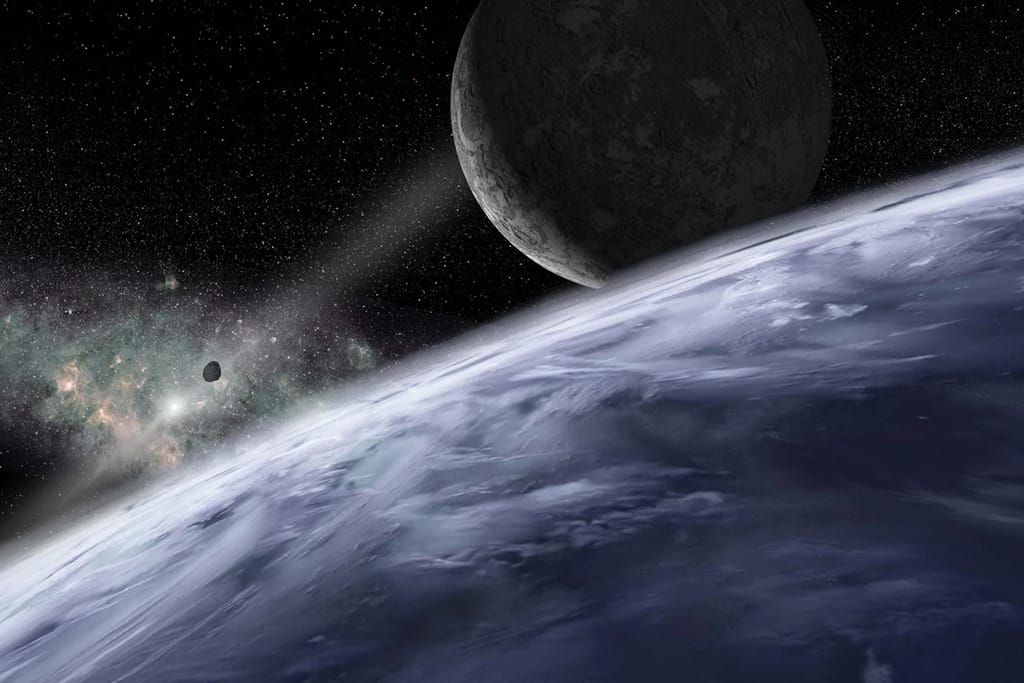
Scientists discovered some unexpected activity among the frozen objects that make up our solar system’s outer ring. The Kuiper Belt is a remote, doughnut-shaped region that encircles much of our solar system and is home to ice-covered worlds like Pluto (a dwarf planet). Scientists have yet to study this little-known area. However, they estimate there are millions of “dead objects” orbiting here. Astronomers used the James Webb Space Telescope to observe some of these frozen objects and discovered evidence that they may not be as dead as previously thought. They directed the powerful telescope, which orbits one million miles from Earth, on Eris and Makemake, the Kuiper Belt’s two largest known objects. It contains sophisticated cameras capable of detecting various elements or molecules in faraway worlds.
The study proposes hot interiors beneath the frozen top, capable of pushing liquid or gas onto the crust
According to a study published in the planetary science journal Icarus, the frozen orbs and objects of the Kuiper Belt are preserved primordial remnants of the early solar system. However, the frozen methane found on Eris and Makamake’s surfaces indicates that these molecules were recently “cooked up”. The study proposes hot interiors beneath the frozen top, capable of pushing liquid or gas onto the crust. The comparatively recent methane deposits indicate that these ice worlds, like Jupiter’s icy moon Europa, may contain oceans. “We see some interesting signs of hot times in cool places,” Christopher Glein, a Southwest Research Institute scientist, said in a statement. Glein, who has previously studied Saturn’s geyser-shooting moon, Enceladus, led the investigation into the Kuiper Belt.
“Hot cores could also point to potential sources of liquid water beneath their icy surfaces,” Glein explained. Scientists speculate that some of these frozen worlds, billions of miles away, could harbour conditions suitable for life. However, there has been no evidence for it. There has been no attempt yet to reach these cosmic frontiers closely. But NASA’s New Horizons mission to Pluto and beyond opened the researchers to a complex world of distinct topography, including glaciers and mountains made of water ice. “After the New Horizons flyby of the Pluto system, and with this discovery, the Kuiper Belt is turning out to be much more alive in terms of hosting dynamic worlds than we would have imagined,” said Glein. “It’s not too early to start thinking about sending a spacecraft to fly by another one of these bodies to place the JWST data into a geologic context. I believe that we will be stunned by the wonders that await!,” he added.